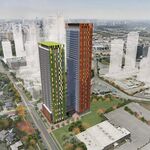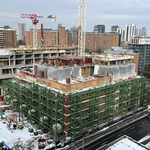doady
Senior Member
Highway 427 is a better corridor for a subway line than Dundas Street? No way. Like MCC, the airport is best served by GO. And it's not like transit on Eglinton can't provide local service to the airport. After all, Eglinton is much closer to the airport than Bloor.
Ridership along Dundas is currently around 20,000 boardings per weekday, compared to around 26,000 for Hurontario, and 20,000 for YRT between Finch and Bernard. Dundas is the third busiest in the 905. The busiest section is between Hurontario and Dixie, so obviously this means the demand for local transit is very high, even if the fact that the busiest bus route in the 905 has no connection at all to the TTC didn't make that clear enough.
Would an upgraded Milton Line really "cannibalize" local transit ridership along Dundas Street? I can't imagine it. I don't think that is how transit works.
Cooksville and Dixie stations are both too far a walking distance from the Dundas corridor to serve it directly. If a Cawthra station is added, that would only mean higher local transit ridership along Dundas, not less. Enhanced GO/REX service for the Milton corridor would mean higher local transit ridership throughout Mississauga, including in the Dundas corridor.
Ridership along Dundas is currently around 20,000 boardings per weekday, compared to around 26,000 for Hurontario, and 20,000 for YRT between Finch and Bernard. Dundas is the third busiest in the 905. The busiest section is between Hurontario and Dixie, so obviously this means the demand for local transit is very high, even if the fact that the busiest bus route in the 905 has no connection at all to the TTC didn't make that clear enough.
Would an upgraded Milton Line really "cannibalize" local transit ridership along Dundas Street? I can't imagine it. I don't think that is how transit works.
Cooksville and Dixie stations are both too far a walking distance from the Dundas corridor to serve it directly. If a Cawthra station is added, that would only mean higher local transit ridership along Dundas, not less. Enhanced GO/REX service for the Milton corridor would mean higher local transit ridership throughout Mississauga, including in the Dundas corridor.







